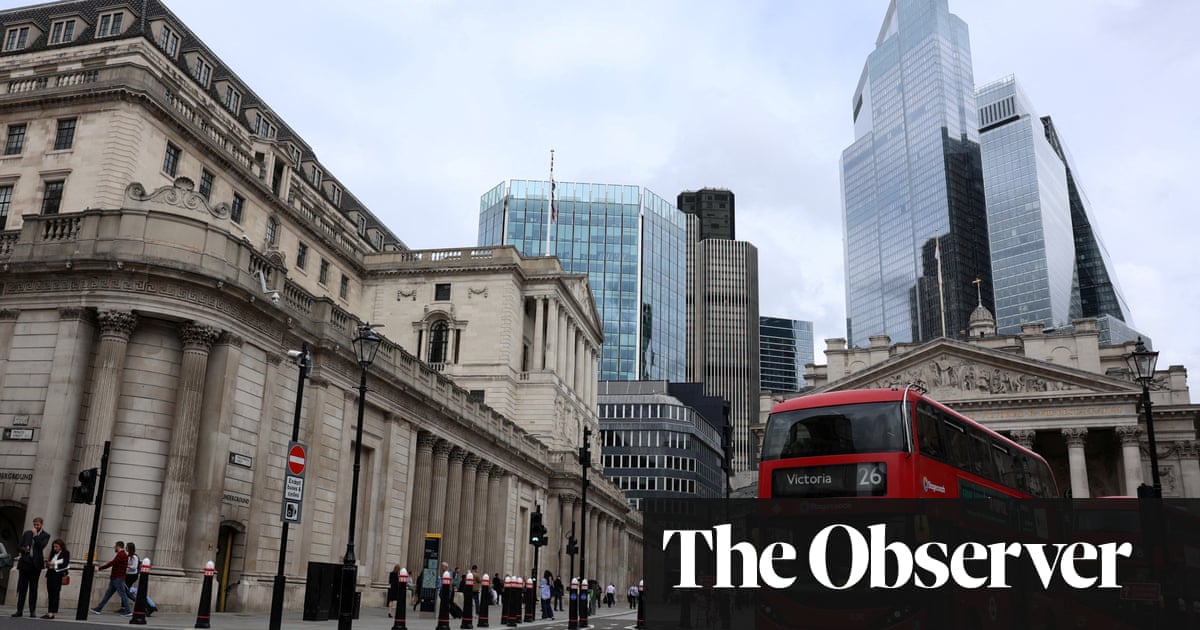WWhen Margot Robbie made a surprise cameo in the 2015 film adaptation of Michael Lewis’ book The big short oneshe did more to educate the general population about the risks of securitization than most financial experts.
The Australian actor’s short monologue, infamously delivered from a champagne bubble bath, explained how banks bundled their growing stock of risky subprime mortgages into investable bonds before cutting them up and selling them at a profit.
But the proliferation of these mortgage-backed securities in the early 2000s created a catastrophic ripple effect across the global financial system as borrowers defaulted on their home loans.
The resulting crisis in 2008 led to a crackdown by regulators. They introduced new rules that could ensure that asset-backed securities – once reportedly dubbed “financial services crack cocaine” by billionaire Guy Hands – would never cause such a massive collapse again.
But sixteen years later, some experts believe new risks are emerging. And this time they are linked to highly indebted companies backed by private equity firms, part of the growing but opaque part of the financial system known as the shadow banking sector. Shadow banking refers to financial companies that face little to no regulation compared to traditional lenders, and includes companies such as hedge funds, private credit and private equity funds.
While the use of securitization declined in the aftermath of the 2008 financial crisis due to tarnished reputation and negative regulation, its popularity has subsequently increased. According to estimates from analysts at RBC Capital, the global securitization market currently comprises around £4.7 trillion in assets.
The UK is responsible for around £300 billion of that total, but more than half – around £180 billion – is part of the so-called public securitization market.
In this public market, bundled loans are rated by rating agencies and resold to a wide range of investors, and their terms, structure and sales are openly disclosed. These are the routes typically taken by traditional banks, which face much stricter regulations. The remaining £120 billion consists of securitized loans, bundled by the shadow banking sector. Private securities are sold directly to a limited group of sophisticated investors. They are less regulated, do not need to be rated by rating agencies and are much more opaque.
Some believe that the growth of the private market and its lack of transparency could pose a problem. “It’s probably an underappreciated risk, given the lack of regulation in that area and the complexity of the instruments held there,” said Benjamin Toms, analyst at RBC Capital.
But even the public securities market deserves close scrutiny, said Natacha Postel-Vinay, an assistant professor at the London School of Economics and an expert on regulation and financial history. This also includes risks associated with collateralized loan obligations (CLOs). These are types of securities backed by a large amount of debt, including loans to companies with poor credit ratings, or troubled companies that have been picked up by private equity firms using large loans, in so-called leveraged buyouts.
“The private equity firms invest in companies that are close to bankruptcy, and in order for these companies to survive, they load them with debt,” Postel-Vinay said. “These loans also end up being repackaged, a bit like the junk mortgages of before the 2008 crisis.”
after newsletter promotion
And while CLOs typically consist of different types of loans to companies in a variety of industries, they don’t completely eliminate the risks.
“It’s a game of whack-a-mole. You regulate things, but then the financial system very quickly finds ways to circumvent the regulations,” says Postel-Vinay.
The Bank of England is collecting the results of its first stress test involving the shadow banking sector. The results of this are expected to be released at the end of next week. Although it will not focus directly on securitization, the Bank has not been shy in expressing its concerns. It warned last December that while British banks were partly protected from losses on CLOs by generally holding the highest quality securities, the British financial system was indirectly at risk through its connection with foreign banks and insurers that hold high and have growing value. exposure to the loans of already highly indebted companies.
And in June, the Financial Policy Committee highlighted the risks associated with the private equity sector more broadly: “Vulnerabilities arising from high leverage, opaqueness around valuations, variable risk management practices and strong connections to riskier credit markets mean the sector has the potential to generate losses for banks and institutional investors.”
Postel-Vinay said it’s important to determine who should be held accountable before something goes wrong. “We want to make sure we don’t repeat the mistakes [of the 2000s] and that it is super, super clear who is responsible for the underlying credit risk of these loans.
“There are underlying loans that need to be repaid, and they need to be screened, and they need to be monitored… And in these cases I have to say there is a lack of transparency. I don’t think a lot of people know exactly what’s going on.”
